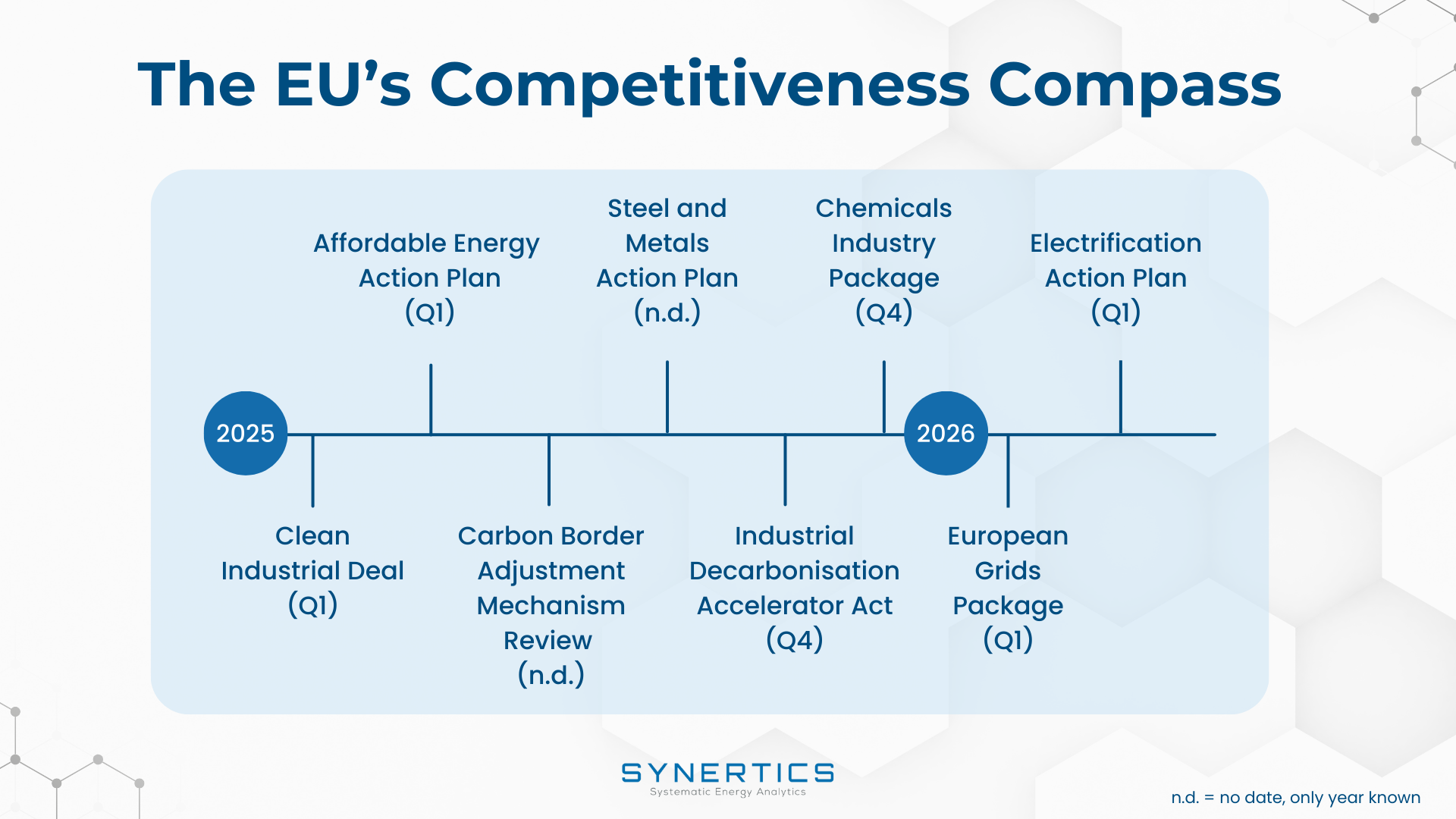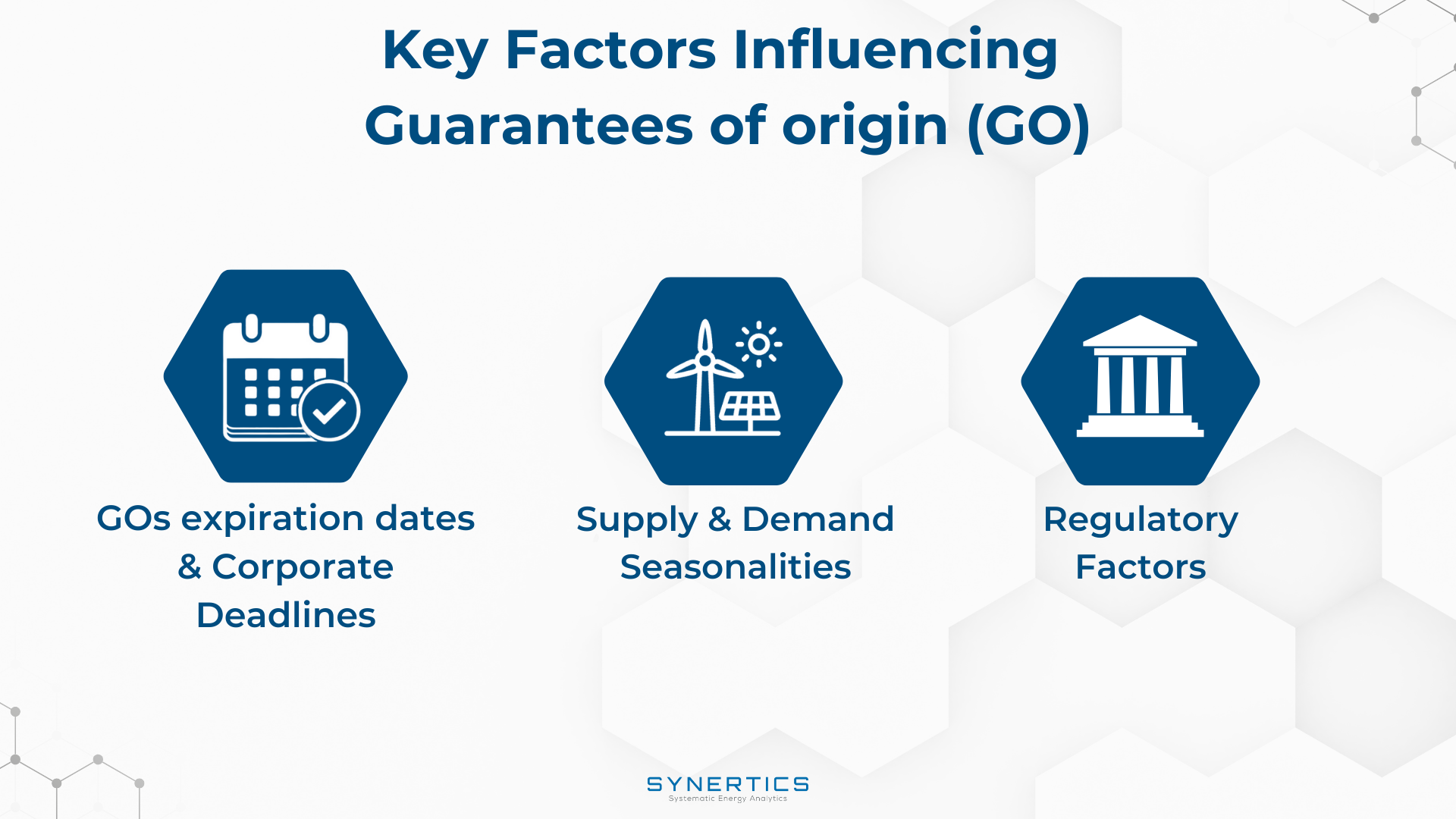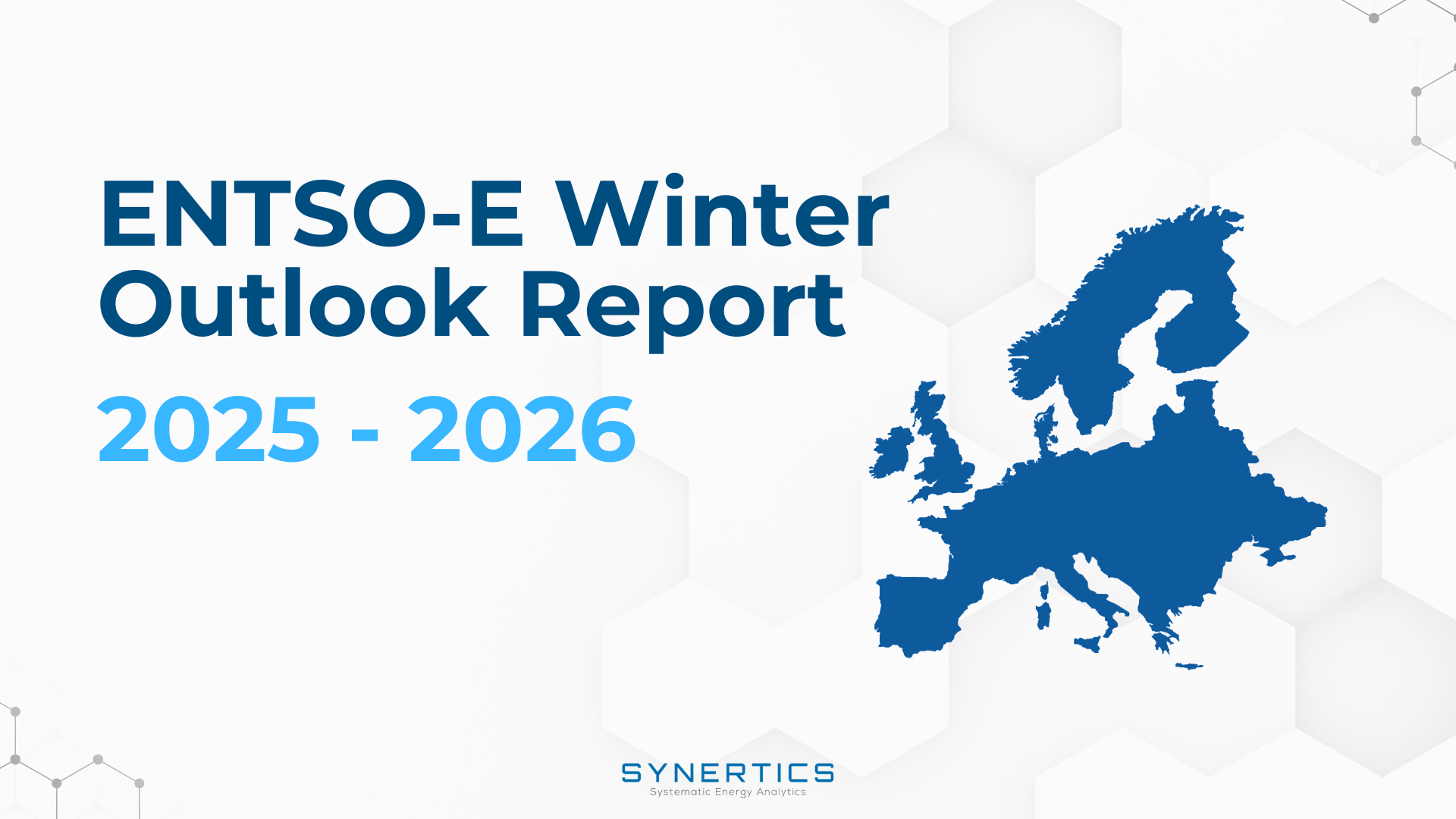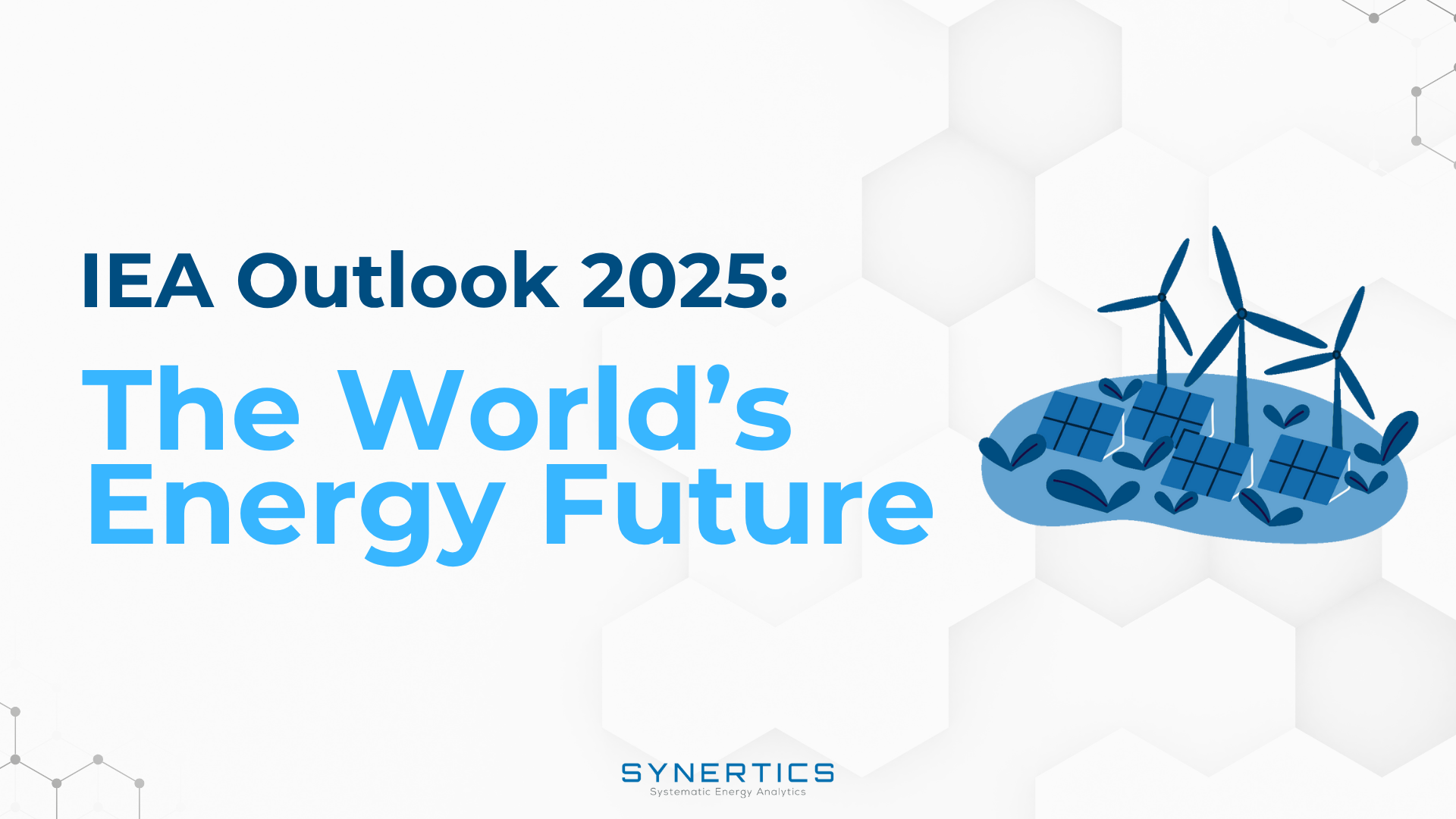Join us on our journey towards renewable energy excellence, where knowledge meets innovation.
The European Union stands at a pivotal moment in its global economic position. Despite a skilled workforce and a unified Single Market, productivity challenges have hindered its competitiveness. In response, the European Commission presented the Competitiveness Compass on 29 January, a strategic framework for accelerating cleaner, more inclusive growth. Building on the findings of the Draghi Report, commissioned by former ECB President Mario Draghi to reform the EU’s economic model, this framework sets the policy direction for the coming years.
This article will provide a brief overview of the EU Competitiveness Compass, outlining its key pillars before diving into its implications for the energy sector and the EU’s path to industry decarbonisation.

The Key Pillars of the Compass
The Draghi Report outlined three key imperatives to strengthen Europe's competitiveness. The Competitiveness Compass translates these into concrete action:
The three pillars are complemented by five horizontal enablers, which are essential to underpin competitiveness across all sectors:
What does this mean for the energy sector and industry decarbonisation?
Tackling High Energy Prices
One of the key challenges highlighted by the Compass is the issue of high and volatile energy prices for both EU households and businesses. Energy costs in Europe are significantly higher than in competitor regions, partly due to the heavy reliance on fossil fuel imports. However, some of the factors that drive up energy prices can be addressed in the short term, as they result from inefficiencies in network tariffs, taxation, and limited energy market integration. The Affordable Energy Action Plan aims to tackle these issues by making low-cost energy more accessible to households and businesses. It will take advantage of cost savings from better market integration, expand the use of guarantees and risk reduction tools to make long-term PPAs easier to secure, and encourage industrial consumers to offer demand flexibility services. Additionally, the plan will ensure that energy system costs are shared more fairly through better-designed tariffs, creating a more balanced and efficient energy market across the EU. The full plan containing further details will be presented in Q1 of 2025.
Encouraging Electrification and Investments in Grids
In addition to reducing energy prices, a crucial aspect is investing in Europe’s energy grids to facilitate the transition to a net-zero system, prevent renewable energy curtailment, and optimize the advantages of the Single Energy Market. To achieve this, Europe must modernise and expand its energy transmission and distribution networks, with increased investment in electricity, hydrogen and storage systems. The Electrification Action Plan and European Grids Package are designed to address these challenges and are set to be presented in Q1 of 2026. However, the European Commission has yet to provide details on what the Electrification Action Plan will include. This has frustrated the Electrification Alliance, representing 10 electricity sector lobbies, which had urged the Commission to present the plan within 100 days of the new EU commissioners taking office on December 1. Instead, the plan’s presentation has been pushed back by a whole year.
Review of the Carbon Border Adjustment Mechanism (CBAM)
To maintain the competitiveness of European industries while reducing emissions, the EU must address carbon leakage, the risk of companies moving production to countries with weaker climate policies to avoid carbon costs. To tackle this, the EU has introduced the Carbon Border Adjustment Mechanism (CBAM), which applies carbon costs to certain imports to ensure that foreign producers face similar climate regulations as EU businesses. However, to make CBAM more effective, the EU is now reviewing its scope. Planned for 2025, though without a specific quarter or date announced, this review will assess whether to include additional sectors and ensure that the carbon costs apply to downstream products, not only to raw materials but also to the products that result from them. The EC is also preparing a simplification of the CBAM for smaller market players.
Faster Permitting Processes and Simplified Funding
The EU, along with national and local institutions, needs to simplify rules and speed up administrative procedures. To make this happen, the Decarbonisation Accelerator Act, set to be presented in Q4 of 2025, will expand fast-tracking measures to cover more industries, including energy-intensive sectors. Complex approval processes for major energy and infrastructure projects, such as Important Projects of Common European Interest (IPCEIs), and Projects of Common Interest (PCIs), will be made simpler and faster.
The EU’s budget framework (MFF) will also be updated to make funding programs easier to navigate. Currently, EU funding is spread across too many different programs, making access complicated. The new approach aims to streamline these resources, making it easier for businesses and projects to get the financial support they need.
Making Low-Carbon Products Economically Attractive
The Clean Industrial Deal, set to be presented in Q1 of 2025, will drive the EU’s transition to clean production and a circular economy by creating strong market incentives and policies that reward early adopters of low-carbon technologies. A key pillar of this initiative is leveraging the EU’s domestic market to boost demand for cleaner products. To achieve this, the Clean Industrial Deal will introduce measures such as product benchmarking and labelling, mandatory sustainability requirements, and preferential treatment for low-carbon products in public procurement. Additionally, financial incentives like contracts for difference will help make clean technologies more competitive. Recognising that energy-intensive industries face significant challenges in transitioning to clean production, the deal will establish a flexible and simplified state aid framework to encourage decarbonisation investments while avoiding market distortions.
Besides the measures covered in this article, there are also industry specific decarbonisation plans such as the Steel and metals action plan and the Chemicals industry package, set to be revealed in 2025 and Q4 of 2025 respectively. Figure 1 below provides an overview of the action plans and agreements related to the energy sector and decarbonisation that are set to be delivered over the coming year.

Figure 1: Timeline of Energy Related Compass Elements
To sum up, the EU’s strategic initiatives to address high energy prices, accelerate electrification, and improve both the grid and permitting processes for energy projects represent bold steps toward achieving a more sustainable future. While these efforts aim to address Europe’s energy and competitiveness challenges, much remains uncertain. Critical details about both the measures themselves as well as their implementation are still missing, raising questions about how effective these measures will ultimately be.
At the same time, the Commission’s emphasis on “cutting red tape” and easing sustainability reporting and due diligence requirements for companies that fall between SMEs and large corporations has raised concerns among environmental organisations. However, the Compass reaffirms the EU’s commitment to its decarbonisation targets, with a goal of reducing greenhouse gas emissions by 90% by 2040. In a press conference following the announcement, EC President Ursula von der Leyen dismissed suggestions that climate goals were being weakened, stating: “We stay the course. The goals are cast in stone. The goals stay, the objective stays, but we want to reach it better and faster. And for that, we have to reduce complexity.”
Despite these assurances, the postponement of the Electrification Action Plan and European Grids Package to Q1 of 2026 is particularly disappointing, as investments in grid infrastructure and storage systems are urgently needed to support the clean energy transition. On a more positive note, we welcome the idea that the Affordable Energy Action Plan will expand the use of guarantees and risk-reduction tools to make long-term Power Purchase Agreements (PPAs) easier to secure. This could play a crucial role in facilitating investments in renewable energy and accelerating the transition to a cleaner, more sustainable energy future.

Insights, Market-trends
15th Dec, 2025

Insights
2nd Dec, 2025

Insights
19th Nov, 2025